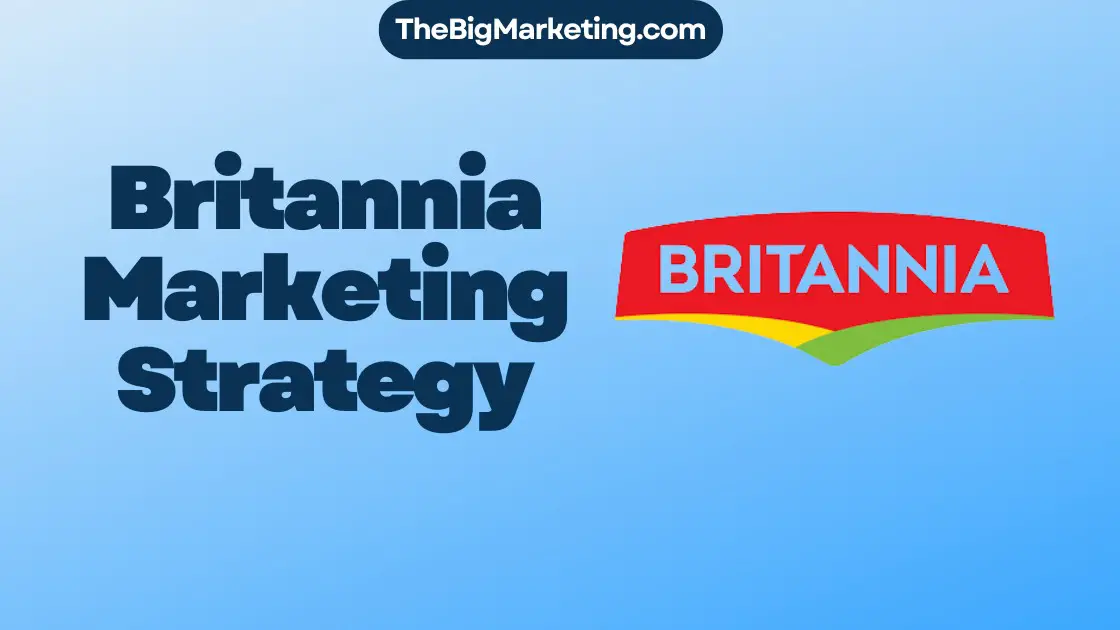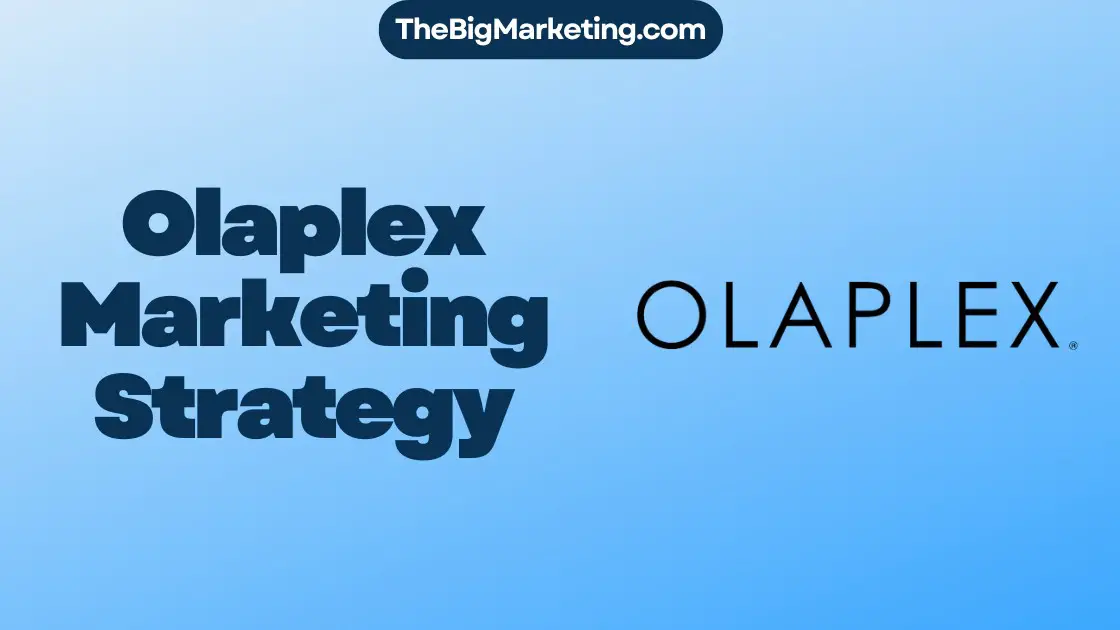Direct response marketing is a powerful strategy that drives immediate actions and generates leads for businesses. Unlike traditional marketing, which focuses on brand awareness, direct response marketing is designed to deliver quick results and show a measurable return on investment (ROI) in a short timeframe.
Direct response marketing involves creating targeted campaigns that prompt consumers to take specific actions. These actions can include making a purchase, signing up for a newsletter, or sharing on social media. By leveraging various channels such as social media advertising, referral programs, contests and giveaways, and chatbots and push notifications, businesses can effectively implement direct response marketing strategies.
Key Takeaways:
- Direct response marketing elicits an immediate response from consumers and focuses on driving specific actions.
- It is different from traditional marketing, which aims to build brand awareness and has long-term goals.
- Benefits of direct response marketing include easy tracking and measurement of results, identifying interested prospects, and establishing direct lines of communication.
- Successful direct response campaigns can be carried out through various channels, such as social media advertising, referral programs, contests and giveaways, and chatbots and push notifications.
- Direct response marketing tactics include personalization, clear calls to action, creating a sense of urgency, and targeting specific segments of the audience.
What is Direct Response Marketing?
Direct response marketing is a marketing strategy that aims to elicit a direct and immediate response from consumers. It is focused on driving specific actions, such as making a purchase, subscribing to a newsletter, or visiting a website. Unlike traditional marketing, which focuses on brand building and long-term goals, direct response marketing is geared towards immediate results and measurable ROI.
Direct response marketing utilizes various techniques to encourage consumers to take the desired action. Personalization is a key technique, tailoring the marketing message to the individual needs and preferences of the target audience. This can include using the recipient’s name in email marketing or offering customized product recommendations.
Clear calls to action are essential in direct response marketing, guiding consumers on what steps to take next. These calls to action should be concise, compelling, and easy to understand. They can be placed strategically throughout marketing materials, such as on landing pages, in email newsletters, or within social media posts.
A sense of urgency is another effective technique in direct response marketing. By creating a time-limited offer or highlighting limited stock availability, businesses can create a sense of urgency that compels consumers to take immediate action. Scarcity can drive consumers to make a purchasing decision sooner rather than later.
Targeting specific segments of the audience is crucial in direct response marketing. By identifying the characteristics, preferences, and behaviors of different customer segments, businesses can tailor their marketing messages and offers to resonate more effectively. This targeted approach increases the likelihood of a positive response and conversion.
Overall, direct response marketing is an effective strategy for businesses looking to drive immediate actions and generate measurable results. By applying personalized techniques, employing clear calls to action, creating a sense of urgency, and targeting specific segments, businesses can harness the power of direct response marketing to achieve their marketing objectives.
Benefits of Direct Response Marketing
Direct response marketing offers several benefits for businesses. One of the main advantages is the ability to easily track and measure the results of your campaigns. With direct response marketing, you can accurately monitor the number of leads and prospects generated from each campaign. This tracking and measurement capability allows you to optimize your marketing strategies and allocate resources to the most effective techniques.
Another significant benefit of direct response marketing is the ability to identify interested prospects. When consumers respond to direct response ads, it indicates their genuine interest in your brand or product. These interested prospects are more likely to convert into customers, resulting in higher conversion rates and improved ROI.
Furthermore, direct response marketing helps businesses establish direct lines of communication with their prospects and potential customers. By implementing effective direct response campaigns, you can offer value and establish a relationship with your target audience. This direct communication allows you to nurture leads and tailor your messaging to specific customer segments, increasing the chances of closing sales and building long-term customer loyalty.
To summarize, the benefits of direct response marketing include:
- Easily track and measure campaign results
- Identify interested prospects
- Establish direct lines of communication
| Benefits | Description |
|---|---|
| Easily track and measure campaign results | Direct response marketing allows businesses to accurately track and measure the number of leads and prospects generated from each campaign. This data helps optimize marketing strategies and resource allocation. |
| Identify interested prospects | Direct response ads attract consumers who have demonstrated an interest in a brand or product, making them more likely to convert into customers. By targeting and engaging these interested prospects, businesses can increase conversion rates and ROI. |
| Establish direct lines of communication | Through direct response marketing, businesses can establish direct lines of communication with their prospects and customers. This direct communication enables personalized messaging, lead nurturing, and the opportunity to build strong customer relationships. |
Examples of Direct Response Campaigns
Direct response campaigns have proven to be highly effective in driving immediate actions and engaging with consumers. Here are some examples of successful direct response campaigns that businesses have implemented:
Social Media Advertising
Social media advertising is a powerful tool for reaching a large audience and personalizing advertisements based on specific segments. Platforms like Facebook and TikTok offer targeted advertising options that allow businesses to deliver tailored messages to their ideal customers. By utilizing captivating visuals and compelling copy, businesses can entice consumers to take action, such as making a purchase or signing up for a newsletter.
Referral Programs
Referral programs incentivize customers to refer friends or family members to the brand in exchange for rewards. This strategy capitalizes on the power of word-of-mouth marketing, as satisfied customers become brand advocates and drive new leads. By offering attractive incentives and making it easy for customers to refer others, businesses can expand their customer base and increase conversions.
Contests and Giveaways
Contests and giveaways are an effective way to engage with consumers and encourage them to interact with the brand. By offering enticing prizes or exclusive experiences, businesses can capture the attention of their target audience and generate excitement. These campaigns often require participants to take specific actions, such as sharing a post, tagging friends, or providing their email address, creating an opportunity for businesses to collect valuable data and nurture leads.
Chatbots and Push Notifications
Chatbots and push notifications are innovative tools that allow businesses to deliver campaign messages to users while they are already engaged with the brand. Chatbots provide instant personalized assistance, guiding users through the buying process and answering their questions. Push notifications deliver timely and relevant messages directly to consumers’ devices, encouraging them to take the desired action immediately. These tactics enhance the customer experience and increase the chances of conversion.
By implementing these examples of direct response campaigns, businesses can effectively engage with their target audience, drive immediate actions, and achieve their marketing goals.
Direct Response Marketing Tactics
Direct response marketing relies on various tactics and channels to drive immediate actions from consumers. One of the key tactics is direct response advertising, which involves creating ads that prompt consumers to take immediate action, such as clicking a link, making a purchase, or signing up for a newsletter. These ads should feature clear and compelling calls to action that encourage consumers to take the desired action without hesitation.
Personalization is another critical direct response marketing tactic. By tailoring campaigns to specific segments of the audience, businesses can deliver relevant and engaging messages that resonate with their target market. This personalized approach enhances the likelihood of a positive response and increases the chances of conversions.
Creating a sense of urgency is yet another effective tactic used in direct response marketing. By emphasizing limited-time offers, deadlines, or highlighting the importance of the proposition, businesses can motivate consumers to take immediate action. This tactic leverages the fear of missing out (FOMO) and encourages consumers to act swiftly to avoid potential regret.
Additionally, direct response marketing encompasses various channels to reach and engage consumers. Social media, email, direct mail, and digital marketing are among the popular channels utilized. Leveraging these channels allows businesses to deliver their direct response messages to a wider audience and create opportunities for immediate action.
In summary, direct response marketing tactics involve using direct response advertising, personalization, creating a sense of urgency, and leveraging various channels to drive immediate consumer actions. Implementing these tactics strategically can enhance campaign effectiveness and generate valuable leads and conversions.
Direct Response Marketing vs. Traditional Marketing
Direct response marketing and traditional marketing are two distinct approaches to marketing, each with its own focus and objectives. While traditional marketing aims to build brand awareness and reputation over the long term, direct response marketing is centered around driving immediate actions and generating leads quickly.
Traditional marketing campaigns often target a broad audience and employ a more passive approach, utilizing strategies such as print advertisements, billboards, and television commercials. The main goal is to create brand recall and establish a strong brand identity.
On the other hand, direct response marketing takes a more targeted and personalized approach. It focuses on specific actions, such as making a purchase, signing up for a newsletter, or visiting a website. Direct response campaigns often incorporate clear and compelling calls to action that prompt consumers to take the desired action immediately.
Unlike traditional marketing, which may take time to show tangible results, direct response marketing aims to deliver measurable ROI in a shorter timeframe. By tracking and analyzing the response rates of campaigns, businesses can make data-driven decisions to optimize their marketing strategies and allocate resources more effectively.
Direct response marketing relies on various tactics and channels to engage consumers and drive conversions. This can include targeted social media advertising, email marketing, direct mail, and digital marketing. By leveraging these channels, businesses can establish direct lines of communication with prospects and customers, nurturing leads and building lasting relationships.
While both direct response marketing and traditional marketing have their merits, it is essential for businesses to consider their goals and target audience when deciding which approach to prioritize. Traditional marketing builds brand reputation and awareness, while direct response marketing is effective for generating immediate results and measurable ROI.
Ultimately, a well-rounded marketing strategy may incorporate elements of both direct response marketing and traditional marketing, depending on the specific objectives and needs of the business. By combining these approaches intelligently and harnessing the strengths of each, businesses can maximize their marketing efforts and achieve optimal results.
| Direct Response Marketing | Traditional Marketing |
|---|---|
| Focuses on driving immediate actions and generating leads quickly | Focuses on building brand awareness and reputation |
| Utilizes targeted and personalized campaigns | Targets a broad audience with a more passive approach |
| Uses clear calls to action to prompt consumers to take a specific action | Aims to create brand recall and establish a strong brand identity |
| Delivers measurable ROI in a shorter timeframe | Results may take time to show and are not always easily quantifiable |
| Relies on channels like social media advertising, email marketing, and direct mail | Utilizes strategies such as print advertisements, billboards, and television commercials |
Direct Response Marketing Techniques
When it comes to direct response marketing campaigns, there are several techniques that marketers commonly utilize to drive consumer actions. These techniques include:
- Customer-centricity: By focusing on the needs and benefits of the target audience, rather than just promoting the brand itself, marketers can create campaigns that resonate with consumers on a personal level. This approach builds trust and increases the likelihood of a positive response.
- Personalization: Tailoring the campaign message and offer to specific segments of the audience can greatly improve engagement. By delivering relevant content and offers that align with the interests and preferences of each segment, marketers can capture attention and generate a higher response rate.
- Clear calls to action: Direct response campaigns rely on clearly defined calls to action to guide consumers towards the desired action. Whether it’s making a purchase, signing up for a newsletter, or filling out a form, the call to action should be prominently displayed and easy to follow.
- Creating a sense of urgency: By incorporating techniques such as limited-time offers, deadlines, or highlighting the importance of the proposition, marketers can create a sense of urgency that motivates consumers to take immediate action. This urgency can be the deciding factor between a consumer taking action or delaying their response.
Implementing these techniques strategically can significantly improve the effectiveness of direct response marketing campaigns, resulting in higher response rates and increased conversions.
Example:
Let’s consider an example of how these techniques can be applied in a direct response marketing campaign for a fitness product:
- Customer-centricity: The campaign could focus on the benefits of the product for different target audiences, such as busy professionals, parents, or fitness enthusiasts. By highlighting how the product can address their specific needs and improve their daily lives, the campaign resonates with each segment.
- Personalization: Email marketing can be used to deliver customized content and offers based on the recipient’s fitness goals and preferences. By providing tailored recommendations and exclusive offers, the campaign captures the interest and attention of each individual.
- Clear calls to action: The campaign should feature a clear call to action that directs recipients to a dedicated landing page where they can make a purchase. A prominent “Buy Now” button and a simple, intuitive checkout process ensure a seamless user experience.
- Creating a sense of urgency: The campaign can include time-limited offers, such as a discount for the first 100 customers or a special promotion that expires within a specific timeframe. These incentives create a sense of urgency, motivating recipients to take immediate action to secure the offer.
| Technique | Description |
|---|---|
| Customer-centricity | Focusing on the needs and benefits of the target audience to create campaigns that resonate on a personal level. |
| Personalization | Tailoring the campaign message and offer to specific segments of the audience for improved engagement. |
| Clear calls to action | Using concise and compelling calls to action to guide consumers towards the desired action. |
| Creating a sense of urgency | Incorporating time-limited offers or highlighting the importance of the proposition to prompt immediate action. |
Direct Response Marketing Channels
Direct response marketing utilizes a variety of channels to reach and engage with consumers. By leveraging these channels, businesses can effectively drive immediate actions and generate leads. Here are some popular direct response marketing channels:
Social Media Advertising
Social media platforms like Facebook and TikTok provide targeted advertising options, allowing businesses to reach specific segments of their audience. Through compelling ad campaigns and clear calls to action, social media advertising can prompt users to take immediate action.
Referral Programs
Referral programs can be an effective way to encourage word-of-mouth marketing and generate leads. By incentivizing customers and offering rewards for successful referrals, businesses can leverage their existing customer base to expand their reach. Referral programs can be promoted through email campaigns or on thank-you pages following a purchase.
Contests and Giveaways
Contests and giveaways are engaging ways to interact with consumers and encourage them to take action. Businesses can deliver these campaigns through email marketing, social media platforms, or even out-of-home campaigns to maximize visibility and participation.
Chatbots and Push Notifications
Chatbots and push notifications provide businesses with the opportunity to engage with users while they are actively using a website or mobile app. By delivering personalized messages and offers through these channels, businesses can enhance the user experience and drive immediate actions.
Other Direct Response Marketing Channels
In addition to the aforementioned channels, direct response marketing can also be implemented through direct mail, direct response TV (DRTV), radio advertising, and various digital marketing techniques. These channels offer businesses diverse options to connect with their target audience and prompt them to take the desired action.
By utilizing a combination of these direct response marketing channels, businesses can effectively engage with their audience and drive immediate actions. It’s important to consider the target audience, campaign goals, and available resources when selecting the most suitable channels for each direct response campaign.
| Channel | Advantages |
|---|---|
| Social Media Advertising | – Targeted options for reaching specific audience segments – Ability to track and measure campaign performance – Potential for viral reach through sharing and engagement |
| Referral Programs | – Leverage existing customer base for lead generation – Encourages word-of-mouth marketing and brand advocacy – Cost-effective compared to acquiring new customers |
| Contests and Giveaways | – Engages and incentivizes consumers to take action – Increases brand visibility and reach – Collects valuable customer data for future marketing efforts |
| Chatbots and Push Notifications | – Provides real-time engagement opportunities with users – Personalized messaging increases user satisfaction and conversions – Enables timely delivery of offers and promotions |
| Direct Mail | – Allows for precise targeting based on demographics and location – Tangible and personalized communication with potential customers – Can be easily tracked and measured for campaign performance |
| Direct Response TV (DRTV) | – Wide reach and exposure through television advertising – Ability to present product demonstrations and testimonials – Clear calls to action prompt immediate response |
| Radio Advertising | – Cost-effective way to reach a specific local or regional audience – Engages listeners through storytelling and captivating scripts – Provides frequency and repetition for brand recognition |
| Digital Marketing | – Wide range of channels, including search engines, email, and display ads – Highly trackable and measurable for optimizing campaign performance – Offers various targeting options to reach specific audience segments |
Conclusion
Direct response marketing is a powerful strategy that allows businesses to drive immediate actions and generate valuable leads. By creating campaigns tailored to specific goals and targeting the needs of the audience, businesses can effectively entice consumers to take the desired action. One of the main advantages of direct response marketing is its ability to easily track and measure results, allowing businesses to optimize their strategies and allocate resources effectively. By identifying interested prospects and establishing direct lines of communication, businesses can nurture leads and convert them into loyal customers.
Implementing effective tactics and utilizing a variety of channels is key to success in direct response marketing. The use of clear and compelling offers, personalization, and creating a sense of urgency can greatly enhance the effectiveness of campaigns. Channels such as social media advertising, referral programs, contests, and chatbots provide businesses with multiple opportunities to engage with consumers and drive conversions. With its focus on immediate results and measurable ROI, direct response marketing complements traditional marketing strategies and helps businesses achieve their marketing goals.
In conclusion, direct response marketing offers numerous benefits for businesses seeking to drive immediate actions and generate leads. By leveraging its unique approach and integrating effective tactics and channels, businesses can maximize their conversions and achieve their marketing objectives. With the ability to track and measure results, identify interested prospects, and establish direct lines of communication, direct response marketing is an invaluable strategy in today’s competitive business landscape.



